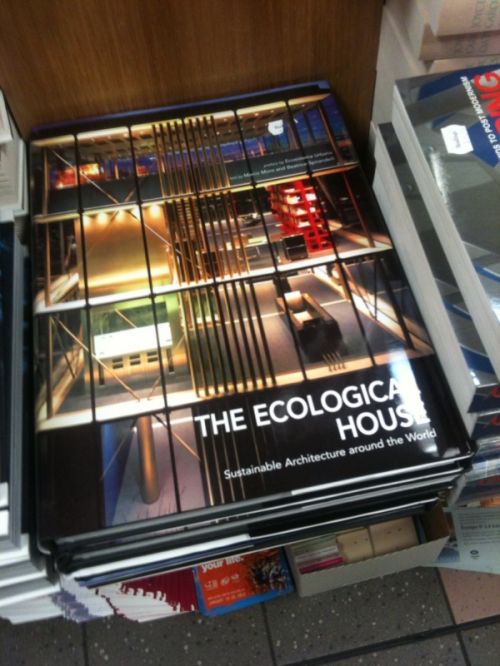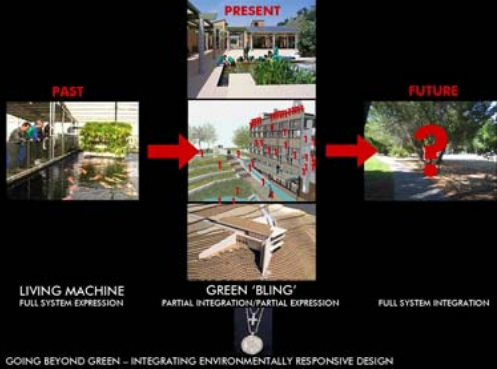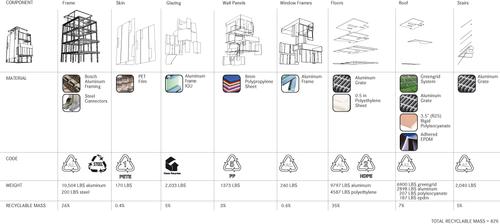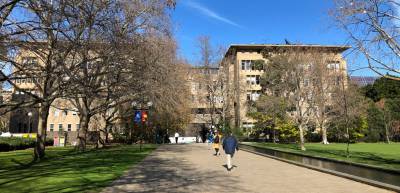home » news » sustainability and awards » Australia
Sustainability - Your laws do not apply to me

Readings sale table, 2011
The Fifth Estate reported in late August that the AIA Sustainability Awards were on their way out, having done their dash. A photo caption summed it up: “It’s over: green bling gongs all gone.” Unable to verify the article, and unable to tell whether it only applied to New South Wales, I didn’t post about it. The AIA was quick to clarify the changes.
The Institute issued a media release on August 31st, penned by CEO David Parken. A similar post by Parken appeared around the same time on The Fifth Estate and EDG websites. Awards criteria are now being amended to adopt the following recommendations:
- That the Sustainable Architecture award should be elevated to a Named Award at a National, Chapter and, where relevant, regional level.
- That the award should be discontinued as a separate entry category, and be selected by the jury from all awards entries (this may need to be by the chairs of juries for those Chapters with multiple juries).
- That the award criteria should be open ended and recognise exemplary contribution to sustainable architecture through design.
- That a preamble should be provided to guide entrants and the jury outlining the intent of the award.
- That all award entries in all categories should be required to include a brief description of the value the project has generated in each of the environmental, social and economic domains. While no detailed performance data would be required the jury could call for additional information from entrants, if required.
- That consideration should be given to changing the composition of juries to ensure one member has detailed understanding of or experience with sustainable design.
This is consistent with its Environmental Policy, which states that the AIA will, “maintain ESD and Energy awards as separate categories until sustainable criteria become a prerequisite of all awards” [ PDF ]. This policy has its roots in the UIA policy of 1993, and has as its main commitment that we, “place sustainability at the core of our practices and professional responsibilities.”
If the sustainability category was a stepping stone to achieving this aim, presumably there is some sort of milestone at which we can step on past it. Have we reached that point yet? The action to remove the category sounds more as if it was motivated by problems within the category, than with us reaching a point that we don’t need it any more.
The participants… were keen to ensure a shift from a preoccupation with technical performance “green bling” to one emphasising the value of creative and intelligent thinking to deliver enduring and meaningful environments through design. [ AIA press release ]
We appear to be losing the category because of its reliance on star ratings and applied “bling”, and to be replacing it with something a lot fuzzier and qualitative.
American architects KieranTimberlake admit to having coined the phrase “green bling” in an architectural context about five ago.
“KieranTimberlake coined the term “green bling” to describe the current trend of applying elements to a building just to meet LEED requirements. Instead KieranTimberlake is working on a comprehensive approach to meeting environmental
challenges: full system integration. This continued exploration allows for the connected process of design, technology, and research to coexist as a way of doing business for the firm.” James Timberlake 2006 [ PDF ]

KieranTimberlake reinvests 3% of its gross revenues back into research, with the help of tax incentives not commonly taken up by our discipline. Timberlake admitted in a 2009 interview that this integrated approach, connecting design, technology, and research, was not available to low-profit firms, especially during a recession. Still he was forceful about the need for research within other practices: “With only half a brain, they’ll go for low-cost, low-tech; if they’re smart, they’ll do the research.”

KieranTimberlake Cellophane house
Despite KieranTimberlake’s talk about setting off on their own tack via their research, they still see a role for institutionalised measuring sticks, in their case LEED. Richard Maimon told Metropolis after their work in New Orleans that, “LEED, for all its pros and cons, is widely recognised as a measure, which is important – having that credibility helped give the project mileage in terms of sustainability and replicability.”
At the same time as Parken issued his press release, Tone Wheeler’s article “Wither the Green Awards?” was published at ADR. Wheeler wrote that the changes picked up on a 2006 review, with some modifications…
…much of the emphasis on metrics and formulaic criteria has been replaced with an appeal to, “broader measures of long-term value, including adaptability, endurance and the significance of beauty … the need to ensure an understanding of sustainability more holistically, including environmental, social and cultural dimensions … the need to recognise the importance of integrated thinking not only at the individual building scale, but at the locality … and urban scale.”
This broader definition of sustainability is trying to cover an awful lot of ground. Incorporating triple bottom line economic and social aspects, it may be more than a single award can cope with. And it may be more than your typical architect, operating within tight client constraints, is able to address – at least without guidance.
Guidance is available all over the place. The AIA and RIBA both have literature freely available online, and The AIA has a subscriber only service (EDG), but these focus on environmental sustainability and rarely extend into economic and social aspects. And according to Wheeler, they are not getting read.
The 2007 ESD design guide of public buildings { PDF ] does touch on how social sustainability might be designed in, suggesting that its key attributes might be accessibility, usability, and street context. The justification for addressing social sustainability within the document is that without it the building will, “either be removed or significantly renovated, which is not sustainable.” So social sustainability is desirable in its own right, but more importantly it is an indirect way to address global warming.
Cameron Tonkinwise, writes in the current issue of Design Philosophy Papers (available for a wee while) that this switch in perception of sustainability is the way to go. Citing cognitive psychology, he says desirable things are more motivating than necessary things. Wants win out over needs. Sustainability needs to be made desirable and affirmative, rather than than negative and necessary.
“The way in which sustainability places strictures on what designers can do, limiting their sovereignty, seems repellant. Without wanting to concede to anachronistic reassertions of the free spirits of designer geniuses, it is worth noting that if sustainability is not a necessity, then sustainable design becomes an affirmation rather than a constraint on the designer’s liberty.” [DPP]
Sustainability – Your laws do not apply to me
Sustainability – Don’t threaten me with misery
[ with apologies to Billy Bragg ]
Whichever way we become more motivated, it sounds reasonable that an award-winning sustainable building be beautiful, but will it apply the other way – can the knock out building of the year win an award if it exhibits only tick box sustainability? Can it still be beautiful?
Ecological sustainability and award-winning design have been uncomfortable bedfellows for years. Officially merging the former into the latter sounds good but the tension will remain. Sometimes it may boil over… looks like ARM have designed an eco-desal plant [ PDF ].
Wheeler writes that the switch is a return to a more subjective view of architecture, an escape from the limitations of the star rating system, and might cause some people to say, “how very architectural”, a return to “internal values”. Or are we prematurely redefining sustainability into something so ‘holistic’ and integral to design that it will lose any distinct meaning for bulk of the profession, and its clients? As was evident from last year’s Sustainable Futures: New Modes of Practice forum, we are still some time from figuring out how our professional values and roles should adapt.
I hope that removing the category and the stars will force the issue rather than sideline it. Can’t wait for the jury presentations.
Posted by Peter on 08.11.11 in sustainability and awards
comment
Commenting is closed for this article.

